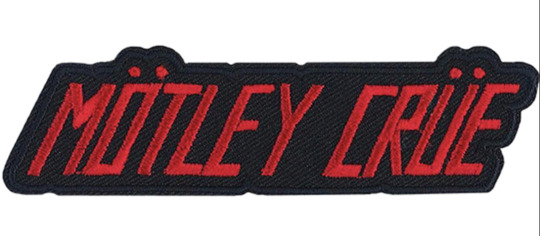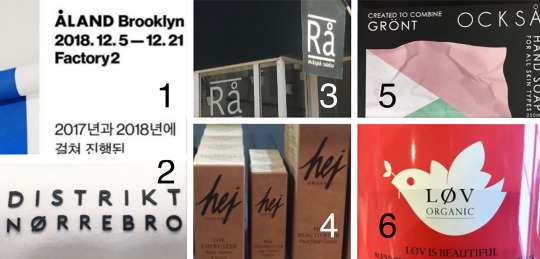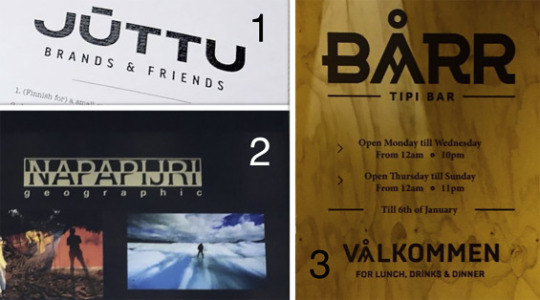#æ ø å are not aesthetic
Text
Okay listen! This
Monster
means "monster". This
Mønster
means pattern! This
Twenty One Pilots
is a band. This
Twenty Øne Piløts
is gibberish. This
Bae
is slang for babe. This
Bæ
means poop.
#sincerely a Danish speaking person#æ ø å are not aesthetic#they have meaning#please stop#my eyes are bleeding#æ#ø#å#denmark#Scandinavia#Nordic languages#danish#text post#misc#twenty øne piløts#stop it!
4 notes
·
View notes
Text
The three extra vowels from hell
So while starting Danish, one of the most basic things you wanna get down in the start would be the extra letters, that are very common i Scandinavia.
The first one would be ‘æ’, and it’s pronounced as the ‘ay’ in say (or gay pop off), without dragging out the ‘y’ sound too much. Complicated to explain, and I suggest you watch some disney movies (read as: pirate some) to get the sound down. In danish it can also be written as ‘ae’
Second comes ‘ø’ which is sometimes (very rarely) written as ‘oe’. Not an aesthetic o. If you want to practice this without stumbling over your words, I suggest trying out the phrase ‘Rødgrød med fløde’. You surely can find several videos of it on youtube. As an example is this one: [link].
Lastly is ‘å’, which can sound akin to the ‘o’ in go. It is often written as ‘aa’ in city names.
0 notes
Text
i hate this exø bullshit it fucks the pronunciation in my head UP
#like LISTEEEENNNN prø'li'hørher#i hate when æ ø å are used for aesthetic jdgsjssk those letters sound so UGLYYYY#øbsessiøn can kiss my fucking ASS like dhdgsj
1 note
·
View note
Text

so I’m 100% guilty of doing the “translate word into random language to use as fantasy name” thing but it’s so jarring when ppl do it with Norwegian. like “utvikle” means “develop” as in... I’m developing a new software. it probably has a cool sound and the person who made it probably thinks its a cool double meaning but I Cannot Take The Fantasy Seriously when its just. a word. u know?
#its not as bad as when ppl use æ ø å for the aesthetic tho#those are DIFFERENT LETTERS#they have a DIFFERENT SOUND#im now reading ur word w a really dumb pronunciation that makes it just sound stupid tbh
1 note
·
View note
Text
attention all English-speakers!
just gon’ remind everyone that the letters Å, Ä, Ö, Ø and Æ are
N O T
interchangeable with the letters A and O!! they are NOT the same
consider this before writing shit like this for the aesthetic:



#if it's an active choice then sure ig#but if you genuinely think that åäö etc are the same as ao? wrong. you are RONG#so if u put åäö where they don't belong just remember that any ppl who have those letters in their alphabet-#-will see it and think it sounds fucking stupid#svenska grejor#languageblr
2 notes
·
View notes
Text
Æ Ø Å
if i see æ ø å used as an aesthetic one more time i’m going to scream
4 notes
·
View notes
Text
yo please stop using æ ø å for your weird aesthetic letters they have actual sounds and you look dumb thanks
53 notes
·
View notes
Note
why do people use æ ø å etc. as fancy letters when tjey aren't? they have different pronounciations from the letters they look like, and they aren't just there to make your text look pretty or aesthetic or whatever. it always makes me feel weird because i regularly use the three mentioned letters above (i'm danish and they're in the danish + other alphabets). please just stop.
.
38 notes
·
View notes
Note
aujkhskjahd i mean i get that the æ ø å stuff is supposed to be an aesthetic-thing but sometimes it turns into something really hilarious instead when you pronounce the words with for example ø instead of o
i will never get over 2014 where people used æ in bae to make it 🌸✨ cute and quirky ✨🌸 but bæ means....literal shit agwgehhe
#and yeah it can be funny agdhdhfj especially the people who actually say tøp and think it's pronounced top#ask#silverrank
1 note
·
View note
Photo

Fuelled by political and economic trends in the 21st century, the concepts “New Nordic” and “Nordic Cool” have entered the global scene in design, cuisine, entertainment, and general lifestyle. Simultaneously, due to globalisation, individuals today are subjected to a higher number of language contact situations than ever before, in face-to-face communication as well as through foreign products and international advertisements.
The term linguistic landscape, which refers to the visibility of languages in public spaces, was first introduced to linguistics by Landry and Bourhis in 1997. In their study, the linguistic landscape of an area is defined by the languages on public road signs, advertisements, and commercial shop signs. In practice all neighbourhoods, cities, and even entire countries have their own linguistic landscape, because all public entities include some form of written language. According to Landry and Bourhis, the linguistic landscape of a territory has two principal functions: an informational function and a symbolic function.
While traditional linguistic landscape research can still be used to study the language uses and policies of localised physical spaces, a large part of the language we encounter on a daily basis reaches us through some type of advertisement or marketing, which is (usually) not contained within a specific neighbourhood or city. This type of sign is purposefully designed to attract our attention, to give us an association, and to sell us a product or idea. The language used on a product is a crucial part of its “unique selling proposition” (USP); a partially or wholly symbolic ideal, communicated through the product's label, packaging, and advertising.

Examples of product labels and designs involving faux Nordic.
Unlike countries such as France and Italy, which have been strongly associated with fashion and food for decades or even centuries, widespread positive associations related to Nordic countries are relatively new. In the last century the global perception of the Nordic countries abroad has shifted considerably, from being regarded as a poor and insignificant region in Europe at the start of the 20th century, to being considered one of the most progressive and happy regions in the word today.
Designer furniture from Northern Europe has been marketed globally as “Nordic” since the 1950s, but it has seen a new peak of popularity in recent years with “New Nordic” and Scandinavian retro designs, alongside the general concept of “Nordic living”. Both Nordic interior design and fashion have come to be associated with positive qualities of simplicity and craftsmanship, and the conceptual aesthetics of “Nordicness” have spread into other domains. Nordic food has become defined with symbolic values such as ‘purity’ and ‘freshness’, qualities which, over time, have become intrinsic to the idea of “the Nordics”. According to Skou and Munch , this fascination seems to be “fuelled by different global, political, and economic trends and the reactualisation of the Nordic welfare states as historical role models.”
As the popularity and recognisability of Nordicness becomes greater, fewer visual clues are required for people to identify a product as Nordic or Nordic-inspired. In some cases, the association can be created by using a full word from a Nordic language, even in situations where the target audience would not understand the word. In other situations, the names of products or businesses may be made up words that are simply intended to look like they stem from a Nordic language. Quite often, however, the writing system of one or several of the Nordic languages may be mimicked, with orthographic features borrowed into other languages in order to inspire associations of Nordicness or globalism.

Examples of product labels and designs involving exaggerated Nordic features in their names.
Although the languages of the Nordic countries do not have a script that would make them immediately distinguishable from other languages, they do share a few distinct orthographic features. Danish and Norwegian use the graphemes æ, Æ and ø, Ø, for the phonemes /æː/ and /øː/, respectively, while Swedish and Finnish use the corresponding graphemes ä, Ä, and ö, Ö. Icelandic and Faroese also use the graphemes æ, Æ and ø, Ø, although æ, Æ represent the diphthong /ai/ in Icelandic and /εaː/ in Faroese. Meanwhile, å and Å are used in Danish, Norwegian and Swedish for the phonemes /ɔː/ (Danish, Norwegian) and /oː/ (Swedish). The graphemes å, Å are also included in the Finnish alphabet, but as Finnish o, O corresponds to the same phoneme, they have no native use in Finnish, and only occur in proper nouns of Swedish origin, such as place-names. Because these orthographic features are largely distinct for the Nordic languages (with a few exceptions), they are often used to index Nordicness in a wide variety of products, in a similar fashion as faux Cyrillic is used to index the Russian language or Soviet associations.
The specific popularity of the graphemes ø and å in marketing is likely due to their relative linguistic unambiguity: while ö and ä may also suggest German orthography and language, ø and å are largely only associated with Nordic languages. The use of these features enforces the Nordic connotations of the brand or business, even when the consumer might not understand the original word. With the exception of texts involving pure faux Nordic or globalese, many of the product names stem from existing words in one or several of the Nordic languages. Yet in most cases the intended foreignness seems to be evoked through the use of graphemes associated with Nordic languages, rather than through the meanings of the words themselves. Indeed, it is not the meaning of the foreign language that is most relevant in advertising, but the identification of this language by the consumer.
It is interesting to note that the countries of Denmark, Sweden, Finland, and Norway all seem to be referenced under the umbrella terms of either “Scandinavian” or “Nordic Cool,” without much distinction being made between them. As such, it is irrelevant whether a nonsense name such as Bårr suggests a Swedish, Danish or Norwegian root to the consumer, as all of the Nordic countries are essentially treated as a single cultural entity with a uniform set of symbolic values. Nevertheless, it is notable that during my research, I never encountered examples of specifically Icelandic or Faroese orthographic features, e.g. the graphemes Þ, þ or Đ, ð. This may suggest that Iceland and the Faroe Islands are at this moment in time conceptually removed from the Nordic countries in the eyes of the international audience, perhaps due to their physical distance from the other Nordic countries.
Full article here: “Nordic Cool” and writing system mimicry in global linguistic landscapes, by Janine A.E. Strandberg.
#Nordic Cool#Lingua#Linguistic landscape#Globalisation#Writing system mimicry#Indexicality#Nordic languages#Janine Strandberg#Elsevier#advertising
3 notes
·
View notes
Text
21 questions
Answer 21 questions and tag 21 people you want to get to know better.
Tagged by: I was tagged by @loveinthebones (thank you!) and this seemed like a fun thing!
Nicknames: Sof, Sophie (yh like the English pronunciation of my name?? bc in Danish it’s pronounced more like Soh-fee-uh), Miss Sophie (from that sketch Dinner for One which is shown every New Year’s Eve in Denmark and it’s great)
Zodiac Sign: Aries
Height: 178 cm which is.... 5′’10 maybeee??
Hogwarts House: Ravenclaw!
The last thing I googled: ‘seligman route 66′ .... spoiler alert but i’m writing a roadtrip fic hehehe (let’s just ignore how the thing before that is ‘tongue tied baby’)
Favorite musicians: Noooo this is difficult!! I usually don’t actually follow artists as much as I browse for songs that I like?? But I’ll say Lukas Graham is pretty often on my playlist right now after I was at a concert of his in February
Some song stuck in my head: Like A Virgin by Madonna (don’t ask lmaoo)
Following: 473 (oh that’s a lot... lmao I didn’t actually know that)
Followers: Like.. in total or on this blog?? I have 213 on here and 700 something on my main (most of them are probably dead blogs by now though lol)
Do you get asks: It happens! And it always makes my day <3
Amount of sleep: Okay like normally I’d say probably like 5-6 hours but with the meds I’m taking now, I’m probably averaging a good 7-8 hours a night!!
Lucky number: 1. It’s usually the number that goalkeepers have on their player uniform in handball so it’s always been “my” number as I’ve been a goalkeeper all my life
What you’re wearing: Black leggings with a big sweater because heck yeah comfort over looks
Dream job: Either something where I can work with animals or a film director
Dream trip: Uff... Japan, Amsterdam, Vancouver, San Torino, New Zealand... I love travelling and I love to experience the difference in culture!! Take me anywhere pls lol
Instruments: NO. lmao, no but I am the least musically skilled person on this planet. I do like the piano though but heck if I know how to play it
Languages: Well, I’m fluent in Danish and English, and I can get by in German and technically I guess Norwegian and Swedish too (I don’t speak them but I can read and understand spoken Norwegian and Swedish - but that’s that Scandinavian thing xD) Also, I know a little bit of Spanish and I can read and understand it somewhat!
(Also, fun fact: I know nothing of Dutch but I can actually understand it alright if I read it??? I guess it’s because it kinda seems like a mishmash of German and English??? But spoken Dutch is a mystery to me lol)
Favorite songs: Looking at my music app, the song most often played at the moment is Not A Damn Thing Changed by Lukas Graham (I’ve linked to a live version because goddamn the way this guy sings his emotions... amazing)
Random fact: a æ u å æ ø i æ å is actually a real sentence in a Danish dialect called sønderjysk and it consists entirely of vowels. If written in “actual Danish” it looks like this: Jeg er ude på en ø i en å. It translates to: I am out on an island in a stream
Aesthetic: Hmm okay I’ll try... coffee, sweaters, laughter, autumn, books, thunderstorms, daydreaming, puppies
Eh, not gonna tag 21 people but if you happen to see this and want to, please do it!!
1 note
·
View note
Text
det siger virkelig noget, at danskere er begyndt at bruge det norske sprog som en slags aesthetic, ligesom engelsktalende bruger æ, ø og å
1 note
·
View note
Text
Can we stop using letters like å ä ö æ ø and more just for the aesthetics please and thank you
#personal shit#as a swedish person it hurts my brain to read english words with those letters#they make different sounds than what you're using them for :)))
2 notes
·
View notes
Photo

Rhinoplasty (RIE-no-plas-tee) is surgery that changes the shape of the nose. The motivation for rhinoplasty may be to change the appearance of the nose, improve breathing or both.
For more information 📲 WhatsApp: https://wa.me/905380814372
https://bestmedicalpackages.com/product/rhinoplasty-medical-packages/
#nosejob #rhinoplasty #plasticsurgery #nosejobistanbul #rinoplastia #rinoplastiaestetica #Nasenkorrektur #Aesthetics #beauty #estética #cirugÃaplástica⬠#estetica #plastischeChirurgie #chirurgieplastique #鼻形æè¡ #æ´å½¢ææ¯ #جراØةاÙتجÙ
ÙÙ #næsekorrektion #ÑиноплаÑÑика #realself #Rhinoplastie #Rinoplastica #Näsplastik #london #lifestyle #realoutfitgram #traveling #travel #igtravel #fashionkilla
#nosejob#rhinoplasty#plasticsurgery#nosejobistanbul#rinoplastia#rinoplastiaestetica#Nasenkorrektur#aesthetics#beauty#estética#cirugíaplástica#estetica#plastischechirurgie#chirurgieplastique#鼻形成術#整形手术#جراحةالتجميل#næsekorrektion#ринопластика#realself#rhinoplastie#Rinoplastica#näsplastik#london#lifestyle#realoutfitgram#traveling#travel#igtravel#fashionkilla
0 notes
Text
Æ,Ø,Å,Ä, ect.
STOP using these letters for you fucking “ A E S T H E T I C S”
You look like a fucking idiot to people who actually use those letters in their language. Take the letter Ø, the most overused letter in aesthetics, Ø is pronounced nothing like you think it would. It makes the “uh” sound and if you were to properly pronouce the Ø in TWENTY ØNE PILØTS, you’d realise who stupid it sounded.
On a side note, Øne means eyes in Norwegian.
So dear, please refrain from using these letters before you make yourself look stupider than you already are.
0 notes
Text
i don’t care if you have the coolest prettiest most astonishing graphic ever if you use Ø/Æ/Å as an ~aesthetic~ you’re dead to me
#text#about me#just scandinavian pet peeves#i hate it so much#it doesn't make any SENSE#IT'S AN ACTUAL LETTER YOU KNOW#IT HAS IT'S OWN SOUND WHO WOULD'VE THOUGHT
3 notes
·
View notes